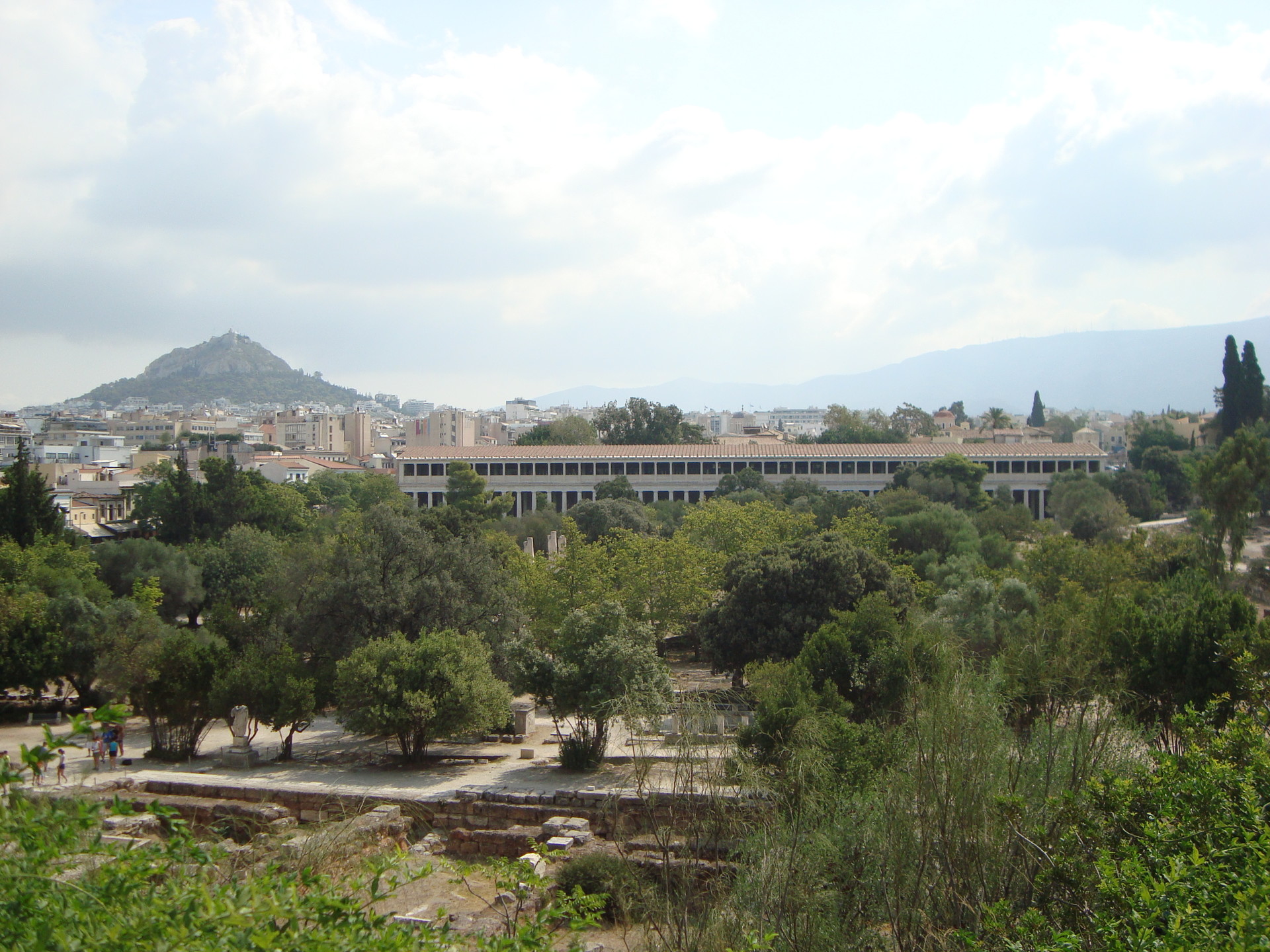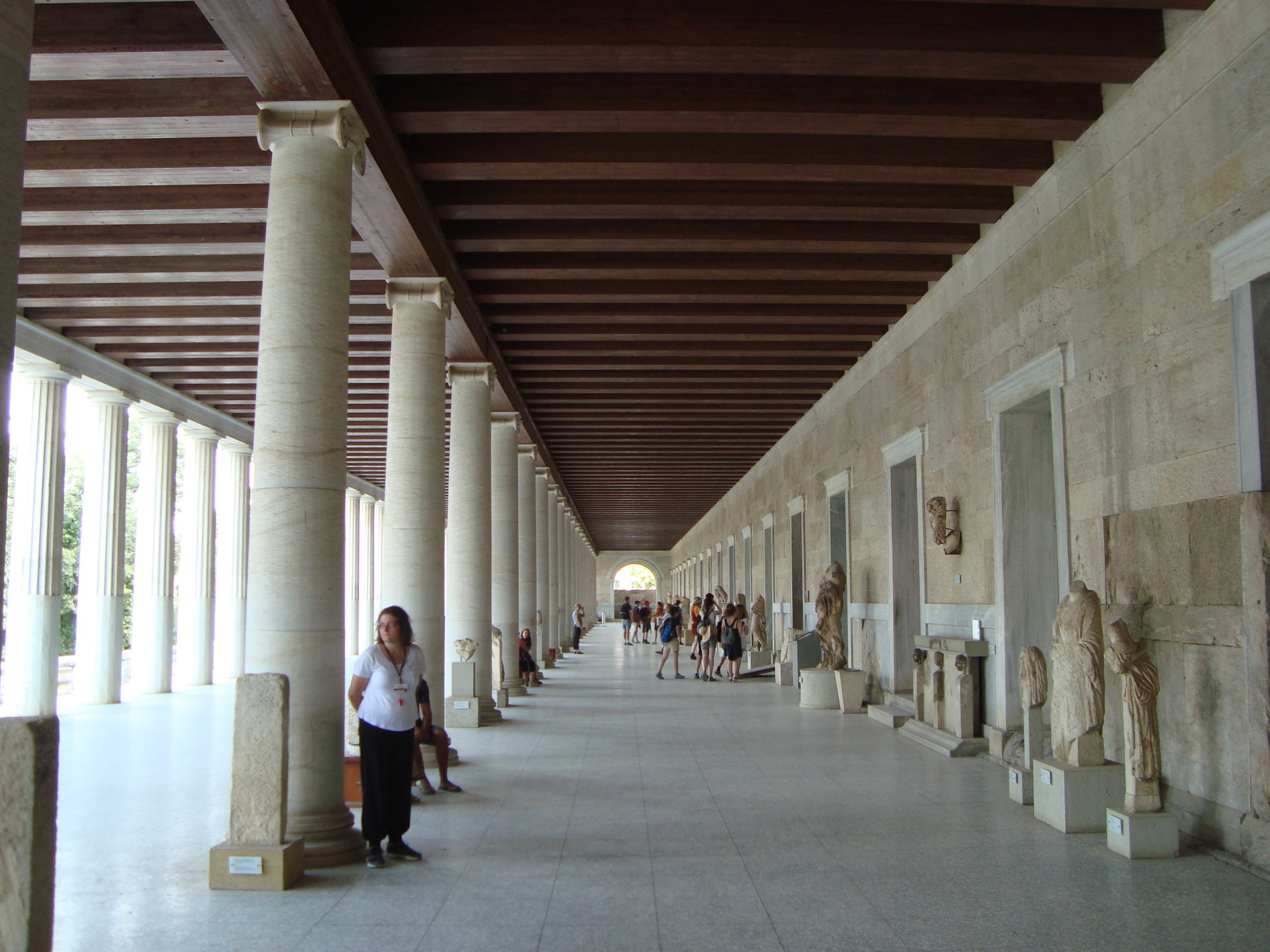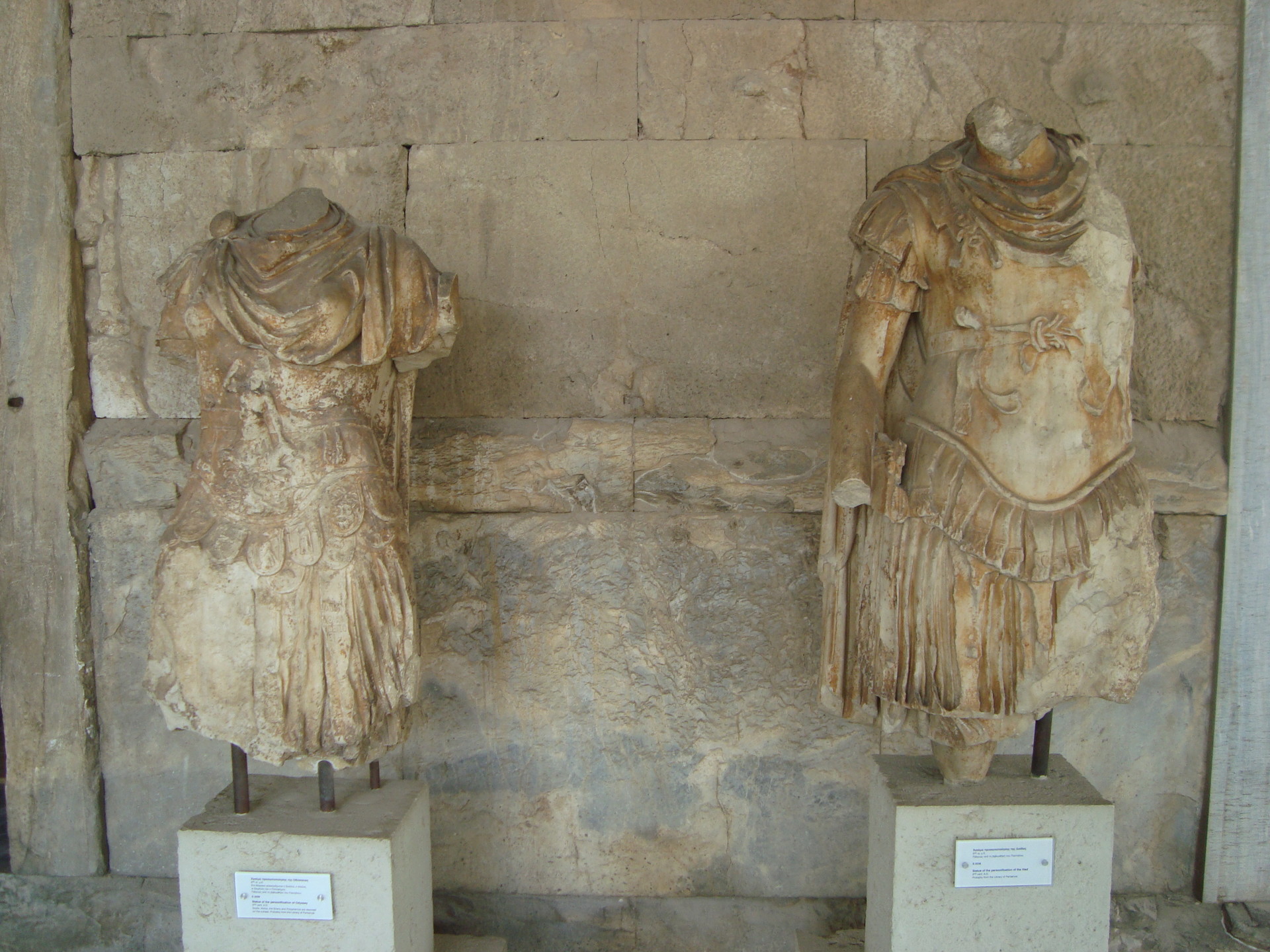The Stoa (Shopping Mall of Philosophy)

Behind the trees of the marketplace, you see the Stoa Poikile (colourful shopping mall) where the popular philosophy of Stoicism originated in the 3rd century BC (Zeno of Citium). It focuses on a divine principle (logos) as the principle of a passive material world (after Heraclitus), a cosmopolitan outlook (after Diogenes) and logical ethics that see virtue as the only real good (as the road to happiness and freedom) and everything else requisites for virtue. Everyone should behave according to nature as everything comes from nature ... this includes controlling your emotions and making your will and state of mind (as a sage) independent from outer influences, hence the proverbial "Stoic calm". Also, virtues such as wisdom, courage, justice and temperance are important alongside with constant self-relfection. Cleanthes and Chrysippus followed Zeno, and later, Panaetius and Poseidonios built Middle Stoicism. In Roman times, Seneca (tutor of Nero), Musonius Rufus (putting himself between to armies to stop war), Epictetus (a former slave) and Marcus Aurelius (philosopher-emperor) completed the school in Latin and Koine Greek. Revivals of it were to be found in the Renaissance and in fact modern times (download the App "The Stoic") if you want to!

"Say to yourself in the early morning: I shall meet today ungrateful, violent, treacherous, envious, uncharitable men. All of the ignorance of real good and ill... I can neither be harmed by any of them, for no man will involve me in wrong, nor can I be angry with my kinsman or hate him; for we have come into the world to work together..." - Marcus Aurelius
Funny how a two-storey shopping mall as an absolutely common public place could produce such a school of influential philosophy! However, it's a spacey building and was very frequented at these times ...

Inside, there were statues and busts of famous men (who also had dicks carved in the front to represent power). Outside, an early written democratic law was to be found on an erected stone slab (no image here) so we could try our Greek reading and translating skills.

Also, traces of the Roman conquest are evident ... as I said, the Romans took not only Greek sculpture, art and literature, but also philosophy (notably Stoicism) and adapted it and elaborated on it. The Agora museum held some more interesting pieces as you will see in my next post ...
Photo gallery
Want to have your own Erasmus blog?
If you are experiencing living abroad, you're an avid traveller or want to promote the city where you live... create your own blog and share your adventures!
I want to create my Erasmus blog! →



















Comments (0 comments)